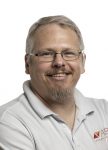In the food processing and food service industry, glove wearing is meant to protect, not infect. That’s the theory, but not necessarily the reality.
Over 100 billion protective gloves—over 90% of the national supply—are imported into the U.S. each year from factories scattered throughout Asia. A good proportion of the gloves are destined for a substantial proportion of the 700,000 workers in meat and poultry processing and fresh produce sectors, as well as a proportion of the 14 million workers in the food service sector.
The FDA recently specifically classified gloves as Zone 1 Food Contact Surfaces, meaning in direct contact with ready to eat (RTE) ingredients or finished food products, and at the highest risk for product contamination.
The Food Safety Gap
However, there is a vital and contradictory gap in the oversight of quality assurance within FDA regulations. Here’s how the gap occurs. The FDA Compliance (21CFR177) for a glove to be called food-compliant involves a one-time single glove test conducted by overseas factories with an FDA-approved lab. The test is focused solely on chemical migration from the glove to food, and unless the manufacturer changes material ingredients, the test has no expiry date. “Food Compliant” gloves are not tested for bioburden, cleanliness or performance.
Complementary regulations also listed under FDA Title 21 Part 110 – Good Manufacturing Practice (GMP 21 CFR 110.10) require gloves to be “intact, clean, and sanitary” and “impermeable.” Upon arrival in the U.S. however, there is no requirement from the FDA for gloves to arrive “intact, clean, and sanitary” and “impermeable.” Gloves with FDA (21 CFR 177) compliance are imported “without the benefit of inspection.”
Why Does This Matter?
If you went down a food processing line and told every glove wearer that there was a 46% chance that the gloves they were wearing contained human fecal indicators, or potentially contained more than 250 unique and viable pathogens, what do you imagine the reaction would be? What would consumers think knowing the food on their dinner table might have been handled by potentially contaminated gloves?
The findings of a five-year study commissioned by Eagle Protect and undertaken by the B. Michaels Group revealed widespread risk of contamination in the disposable glove industry. The findings were presented at the 2019, 2021 and 2022 International Association for Food Protection (IAFP) annual meetings. Results found human fecal indicators on 46% of new and unused off-the-shelf gloves along with other foodborne pathogens and microbes including E. coli, Bacillus cereus, Bacillus anthracis, Listeria monocytogenes, Clostridiales difficile, Staphylococcus, Salmonella, Pseudomonas aeruginosa, Streptococcus pneumonia, and various fungi including Aspergillus.
Michaels, a leading microbiologist, ran the study, which involved independently testing 2,800 new and unused U.S. glove imports representing 26 different brands (approximately 25% of the ~100 SE Asian glove factories). Over 250 different viable microbial species were found on both the interior and exterior surfaces of the tested gloves.
Based on both observed conditions and events at SE Asian glove factories, as well as characteristics of microorganisms identified on or in disposable gloves, it was ascertained that microbes originate from contaminated water sources (rivers, drainage ditches and ponds). Once introduced into glove manufacturing facilities, contaminated rinse water circulates in and out of leaching or wash tanks, often not heated sufficiently, that are responsible for removing soluble chemical residues from glove surfaces.
In addition, gloves made of poor-quality materials can rip and tear, with particles finding their way into food products. Glove toxins can also contribute to a range of potential health issues including carcinogenicity, endocrine disruption, fertility impairment, metabolic disorders and skin diseases including dermatitis. For companies, there are issues with potential recalls, liability, worker compensation and consumer health.
How Can This Be?
In addition to dirty, polluted, contaminated water sources at factories, poor filtration, poor raw materials, unhygienic packing, poor hygiene practices by factory staff, lack of oversight and care by factory owners and, most important, lack of procurement standards on the part of U.S. corporate, business and institutional glove purchasers allow this to go on.
What Is the Solution?
There is little pressure on foreign glove manufacturers to self-regulate and improve their practices, unless businesses refuse to purchase from companies that cannot demonstrate acceptable standards. Therefore, the onus is on corporate and business purchasers of gloves. They need to be better educated about glove safety, including the risks of billions of potentially contaminated gloves on the hands of their workers in factories and plants, the potential risks to end consumers, and the value of adopting of clear standards for procurement that supersede the overwhelming criteria of “how cheap can we get them?”
Ask 1: Do manufacturers use Safe Ingredients? Are the raw materials tested to ensure consistency of manufacturing and to ensure the gloves are free of potentially toxic chemicals that might impact user and consumer health or contaminate food?
Ask 2: What is the Performance of the glove? Strength and durability tests and Acceptable Quality Level (AQL) further ensure consistent glove performance. AQL (maximum pinhole defects per 100 gloves) levels are required for medical and sterile gloves. There are no stated requirements by the FDA for Food Compliant Gloves. However, the standard should be at 2.5 (examination grade) or lower for food safety.
Ask 3: Are the gloves Clean? Bioburden on both the inside (skin contact) and outside (food and patient contact) can be tested to identify fungal and microbial contaminants that could pose a threat to the glove wearer, and the product handled.
Ask 4: Are the gloves Skin Tolerant? Poor quality gloves are often the cause of skin irritation. FDA Food Compliance does not ask for cleanliness, physical standards or toxicity tests. Gloves can be tested for a wide variety of chemicals and toxic exposure that could result in dermal or systemic toxicity, ensuring against skin irritation and occupational skin diseases of the wearer.
Ask 5: Is the factory making your gloves independently certified and does it use child or forced labor? Does your supplier or distributor have credentials such as being a registered B-Corp or accreditation by WRAP (Worldwide Responsible Accredited Production) organization, SEDEX (Supplier Ethical Data Exchange) or similar independent labor and quality verifications?
Ask 6: Is the product traceable? Does your glove box come with a QR code in which manufacturing activity is captured, secured and shared across the supply chain?
Consortium of Agreement to be Better Informed
The sight of blue gloves on a production line is universal. So too is the assumption that these gloves are safe by being “intact, clean, and sanitary.” Yet, we have learned that this is not always true. The only realistic action that can improve glove safety is for corporations to adopt standards, for glove wearers to demand quality gloves and for consumers to start asking “What’s in your gloves?”
Although regulators can set the tone that encourages industry to do the right thing, ensuring glove safety really does come down to suppliers and buyers uniting in a full-throated demand that there be a reduction in the risk of glove contamination in the U.S.
There needs to be a consortium of agreement from purchasers of protective gloves to shift from the lowest common cost denominator (cost) to a higher standard. The top 15 food producing companies in the U.S. have a combined market capitalization of $1.4 trillion so there is room to take some extra safety steps to implement a Supplier Code of Conduct using a system to conduct assessments and lab tests and to monitor outcomes.
Better and more informed decisions can be made by procurement departments. Food processing and food service companies all have safety and sustainability criteria; glove safety should be among the standards to adhere to.
We should be able to feel more at ease knowing that the gloves our food processing and service personnel put on are of the highest standards. This should be a paramount concern, not just to experts, but also the public who remain mostly unaware of the risks and dangers in glove manufacturing. Therefore, it is incumbent on all the industries involved in the making, selling and purchasing of gloves to adopt and advocate for a robust system for the manufacturing, tracking and quality assurance of gloves.






















